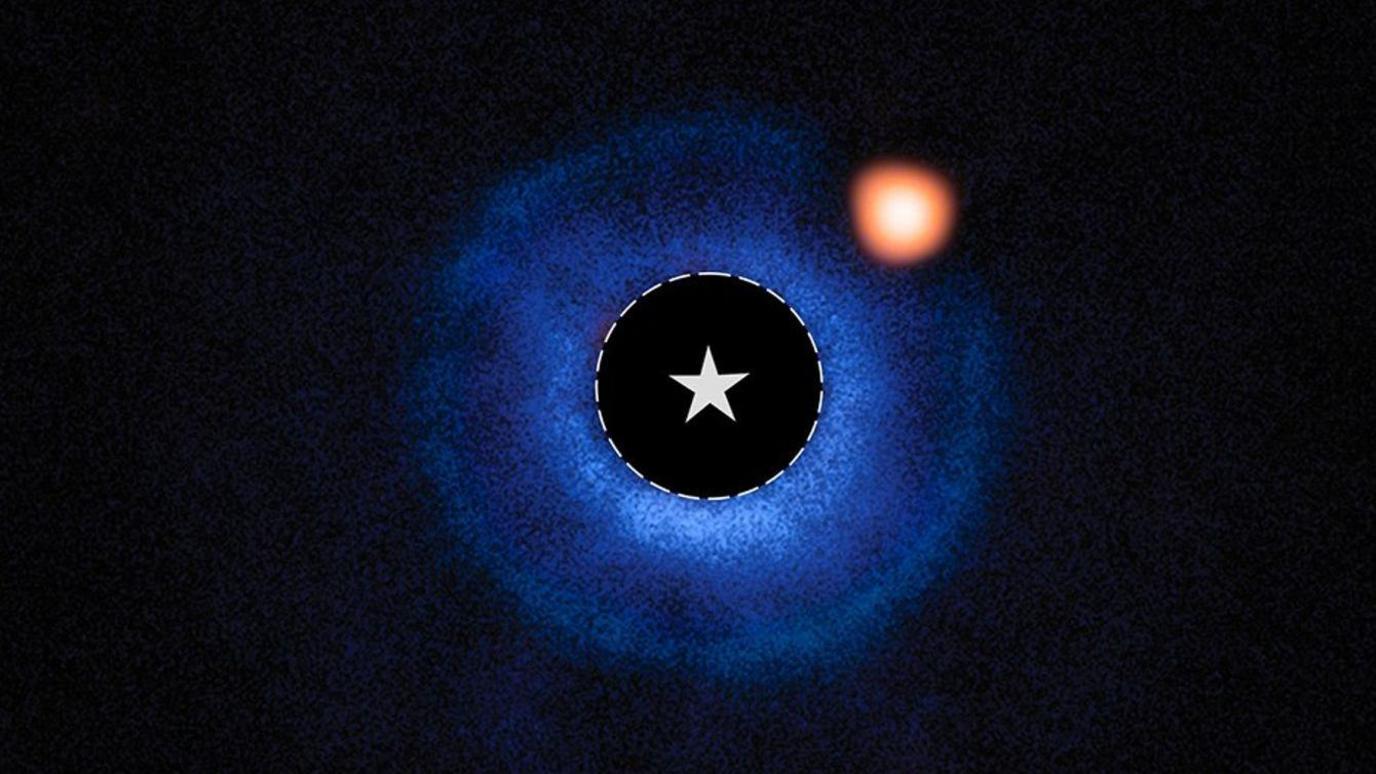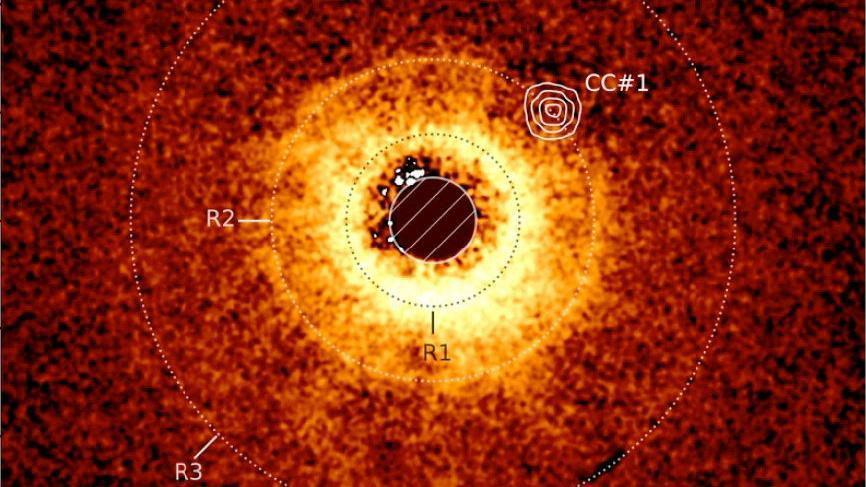James Webb space telescope spots its first exoplanet

- Published
The James Webb Space Telescope been has been sending incredible images of space back to Earth and helping scientists learn more about the universe since its launch in 2021.
And, now there is a new discovery to add to the list.
The telescope, which can see further into the universe than anything before it, has just spotted its first exoplanet.
TWA 7b, is located around a hundred light years from Earth and is thought to be a relatively young 6.4 million years old.
More space news
'Spectacular' images revealed by forest spotting space mission
- Published25 June
Historic mission to ISS blasts off into space
- Published25 June
First pictures taken by world's largest digital camera released
- Published31 July
What did the James Webb telescope spot?

Until now, the James Webb space telescope has mostly been used to learn more about already known exoplanets, rather than look for new worlds.
Now, for the first time, the powerful telescope has discovered an exoplanet not previously known to scientists.
The international team, led by Dr Anne-Marie Lagrange, researcher at the Paris Observatory and Grenoble Alpes University in France, decided to point the telescope Webb at a star called TWA 7 - around a hundred light years from Earth.
Using hi-tech instruments on board, the space telescope was able to block out light from stars, helping it to observe nearby fainter objects.
This helped it spot the exoplanet TWA 7b, a young gas giant planet roughly the size of Saturn - our solar system's second-largest planet - orbiting a star about 110 light-years from Earth in the constellation Antlia.
In a statement, France's CNRS research centre said that the discovery "represents a first for the telescope."
Dr. Anne-Marie Lagrange explained: "Webb opens a new window - in terms of mass and the distance of a planet to the star - of exoplanets that had not been accessible to observations so far.
"This is important to explore the diversity of exoplanetary systems and understand how they form and evolve," she added.
Scientists are now looking to find out more about TWA 7b and hope that the telescope could help them discover "Earth-like planets" one day.
What is an exoplanet?

Experts think the exoplanet Kepler-452b has very close similarities to Earth
Exoplanets are planets that orbit a different star than our Sun - in a different solar system to ours.
Even though scientists thought for a long time that they must exist, it was only in 1992 that the first exoplanet was discovered.
Recent work to find more exoplanets has produced some exciting results too.
In 2015, scientists discovered the exoplanet Kepler-452b, which was described as 'Earth's cousin' because of its close similarities to our planet.
Space experts say exoplanets are really important because they raise the possibility that life could exist in other solar systems.
